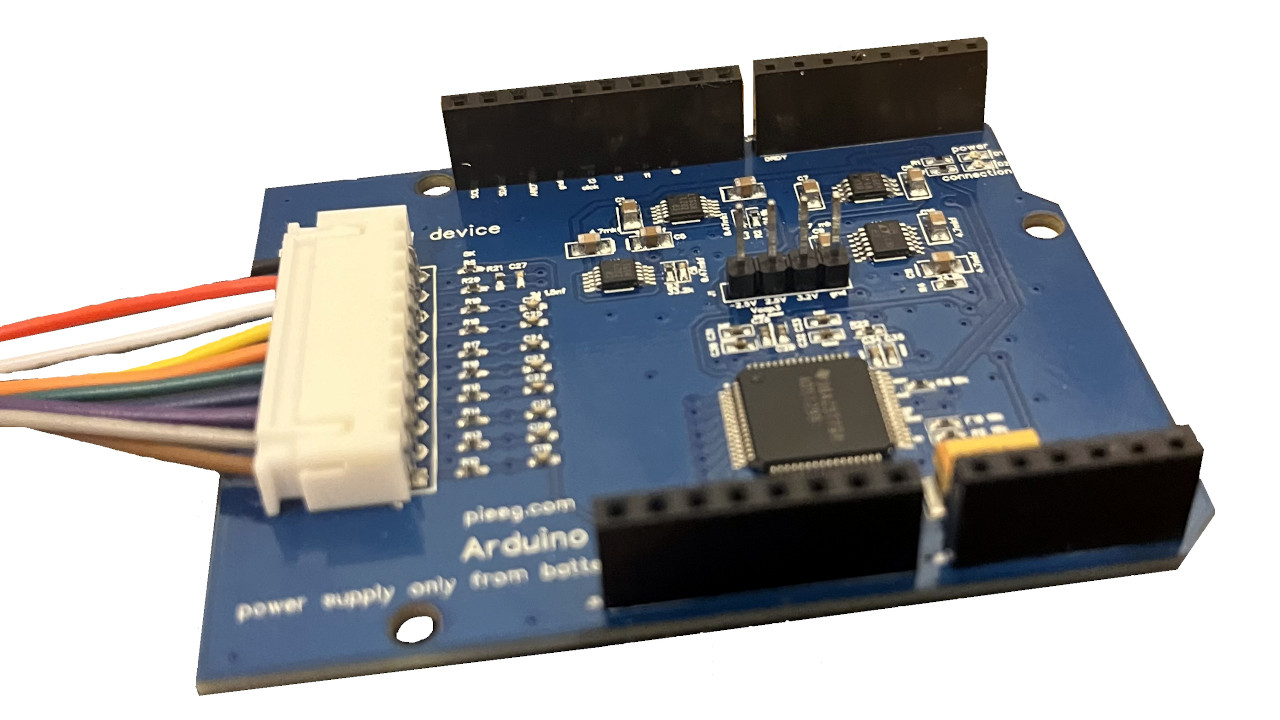
Considering the incredible potential offered by brain-computer interfaces (BCIs), it’s no wonder there are so many companies scrambling to make their mark in the field. Some see it as an assistive technology, while others imagine it as the future of interactive entertainment. Regardless of the application, the technology has yet to make much inroads with the DIY crowd — largely due to the complexity and cost of the hardware involved.
But that might change in the near future thanks to projects like ardEEG from [Ildar Rakhmatulin]. This open source shield mounts to the top of the Arduino UNO R4 WiFi and features eight channels for collecting electroencephalogram (EEG) data, such as from a dry electrode cap. The signals can then be processed on the computer using the provided Python example code. From there, the raw data can be visualized or plugged into whatever application you have in mind.
Why target the relatively uncommon WiFi version of the Uno? It’s probably obvious for those with experience with this kind of hardware, but for safety, the system needs complete electrical isolation. The Arduino and shield are powered by a common USB battery bank, and all communication is done over WiFi. Even still, the documentation is clear that the ardEEG is not a medical device, and hasn’t been certified by any regulatory agency — its use is entirely at your own risk.
[Ildar] tells us the hardware will be available soon and should cost under $250, making it one of the most affordable BCI development platforms out there. As with his earlier PiEEG project, the hope is that basing the system around a common device in the hacker and maker scene will help democratize access to BCI research.